Plano Mirrors, Back Side Polished
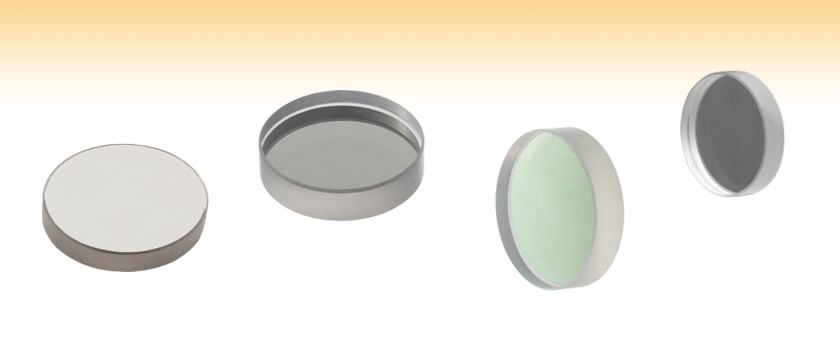
- Plano Mirrors with Back Sides Polished to λ/4 Flatness
- Protected Silver or Broadband Dielectric Coatings
- Available in Ø19 mm and Ø1" Sizes
- 0° to 45° Angle of Incidence
PF10-03-P01P
Ø1", Protected Silver Coating for
450 nm - 20 µm
Front
Back
BB1-E03P
Ø1", Dielectric Coating for
750 - 1100 nm
BB07-E02P
Ø19 mm, Dielectric Coating for
400 - 750 nm

Please Wait
Features
- Back Side Polished Ø19 mm and Ø1" Plano Mirrors
- Choose from Three Front Surface Coatings
- Broadband Dielectric for the 400 - 750 nm Range
- Broadband Dielectric for the 750 - 1100 nm Range
- Protected Silver for the 450 nm - 20 µm Range
- Front (Coated) Surface Polished to λ/10 with a Scratch-Dig of 10-5
- Back Surface Polished to λ/4 with a Scratch-Dig of 40-20
- Useful for Power Monitoring Applications
Thorlabs offers three of our most popular mirror coatings on plano substrates with polished back sides. Choose from three coatings on the front surface: a broadband dielectric coating that offers >99% average reflectance from 400 to 750 nm, a broadband dielectric coating that offers >99% average reflectance from 750 to 1100 nm, or a protected silver coating that offers >95% average reflectance from 450 nm to 20 µm. Since the back sides are polished to a λ/4 flatness with a surface quality (scratch-dig) of 40-20, these mirrors will transmit a very small portion (<<1%) of the incident light within the coating band, thereby enabling sampling of the incident light without the need for additional optical elements. Thorlabs also offers concave back side polished mirrors with dielectric coatings for either 400 - 750 nm or 750 - 1100 nm.
The front surface quality of the metallic-coated back side polished mirrors featured here are superior to those of our Protected Silver Mirrors with a frosted back side (10-5 scratch-dig compared to 40-20), but all other specifications are identical. In contrast, the front surface specifications of the Dielectric-Coated Mirrors with polished back sides are exactly the same as those of our broadband dielectric mirrors with fine ground back sides, so in this latter case, it is merely a choice between whether or not a polished back surface is desired for your application.
Although the transmission properties of back-side polished mirrors are desirable in certain applications, there are tradeoffs to consider. By polishing the back side of a mirror more light will get reflected by the back surface, thereby increasing the number of stray beams present in the lab. When using backside polished mirrors, ensure that all stray beams are blocked appropriately. Thorlabs offers an extensive line of laboratory safety equipment (e.g., blackout materials, beam dumps, goggles) to facilitate safety precautions. In addition to safety concerns, when using backside polished mirrors, unwanted interference effects can arise between the light reflected from the front surface and that reflected from the optically flat back surface. Finally, broadband dielectric mirrors, such as the BB1-E02P and BB1-E03P featured here, are fabricated from a complex multilayer dielectric coating technique, which affects the transmitted light. Both the wavefront and the polarization of the transmitted beam will be altered, and these effects are temperature dependent.
Due to their high reflectance over the 450 nm - 20 µm range and excellent surface quality, the protected silver mirror is well suited for use with femtosecond pulsed lasers.
Thorlabs also offers back side polished concave mirrors with visible or NIR dielectric coating ranges.
Care and Handling
Silver coated mirrors require additional care due to their susceptibility to damage from environmental conditions and improper handling. Fingerprints, contact with abrasive surfaces, and environments with high humidity or temperature will diminish the effectiveness of the protective overcoat leaving the silver coating susceptible to oxidation and degradation. When working with silver mirrors, follow standard practices for handling optics. Latex gloves or similar protective coverings are recommended to prevent oil and other residues on the user’s fingers from reaching the optical surface. Even with such precautions, care should be taken not to touch the mirrored face or edges. Silver mirrors should be used and stored in areas at room temperature with minimal humidity. For information on how to clean mirrors and other optics, visit our Optic Cleaning Tutorial.
| Backside Polished Mirrors | |||||||
|---|---|---|---|---|---|---|---|
| Item # | BB07-E02P | BB1-E02P | BB07-E03P | BB1-E03P | PF07-03-P01P | PF10-03-P01P | |
| Diameter | Ø19 mm | Ø1" | Ø19 mm | Ø1" | Ø19 mm | Ø1" | |
| Diameter Tolerance | +0.0 mm / -0.1 mm | ||||||
| Thickness | 6.0 mm | ||||||
| Thickness Tolerance | ±0.2 mm | ||||||
| Substrate | Fused Silica | ||||||
| Parallelism | <3 arcmin | ||||||
| Front Surface | |||||||
| Coating | Broadband Dielectric for 400 - 750 nm | Broadband Dielectric for 750 - 1100 nm | Protected Silver | ||||
| Reflectance | Ravg > 99% Over Entire Wavelength Range; 0° to 45° AOI | Ravg > 97% from 450 nm - 2 µm; 0° to 45° AOI Ravg > 95% from 2 µm - 20 µm; 0° to 45° AOI |
|||||
| Flatness | λ/10 at 632.8 nm Over Clear Aperture | <λ/10 at 632.8 nm Over Clear Aperture | |||||
| Surface Quality | 10-5 Scratch-Dig | 40-20 Scratch-Dig | |||||
| Clear Aperture | >Ø16.2 mm | >Ø21.6 mm | >Ø16.2 mm | >Ø21.6 mm | >Ø17.1 mm | >Ø22.86 mm | |
| Damage Threshold |
Pulsed | 0.25 J/cm2 (532 nm, 10 ns, 10 Hz, Ø0.803 mm) | 1 J/cm2 (810 nm, 10 ns, 10 Hz, Ø0.133 mm) 0.5 J/cm2 (1064 nm, 10 ns, 10 Hz, Ø0.433 mm) 0.205 J/cm2 (800 nm, 99 fs, 1 kHz, Ø0.166 mm) |
1 J/cm2 (1064 nm, 10 ns, 10 Hz, Ø1.010 mm) 0.225 J/cm2 (800 nm, 99 fs, 1 kHz, Ø0.167 mm) |
|||
| CWa | 550 W/cm (532 nm, Ø1.000 mm)b | 10 kW/cm (1070 nm, Ø0.971 mm)b | 1750 W/cm (1.064 µm, Ø0.044 mm) 1500 W/cm (10.6 µm, Ø0.339 mm) |
||||
| Back Surface | |||||||
| Flatness | <λ/4 at 632.8 nm Over Clear Aperture |
λ/4 at 632.8 nm Over Clear Aperture |
<λ/4 at 632.8 nm Over Clear Aperture |
λ/4 at 632.8 nm Over Clear Aperture |
<λ/4 at 632.8 nm Over Clear Aperture |
λ/4 at 632.8 nm Over Clear Aperture |
|
| Surface Quality | 40-20 Scratch-Dig | ||||||
These plots show the reflectance of our -E02 (400 - 750 nm) dielectric coating, -E03 (750 - 1100 nm) dielectric coating, and protected silver coating (-P01; 450 nm - 20 µm) for a typical coating run. The shaded region in each graph denotes the spectral range for optimum reflectance. Due to variations in dielectric coating runs, this recommended spectral range is narrower than the actual range over which the optic will be highly reflective. If you have any concerns about the interpretation of this data, please contact Tech Support. All data is for unpolarized light unless otherwise stated.
-E02 Coating (400 - 750 nm)
-E03 Coating (750 - 1100 nm)
Protected Silver Coating (450 nm - 20 µm)
Below are transmission plots for our backside polished mirrors. Outside of the HR coating range for the mirrors with dielectric coatings, there is a fair amount of transmission. The Protected Silver coating offers little transmission over the spectral range from 200 - 3000 nm. The shaded region in each graph denotes the spectral range for optimum reflectance.
| Damage Threshold Specifications | ||
|---|---|---|
| Item # Suffix | Damage Threshold | |
| -E02P | Pulsed | 0.25 J/cm2 (532 nm, 10 ns, 10 Hz, Ø0.803 mm) |
| CWa,b | 550 W/cm (532 nm, Ø1.000 mm) | |
| -E03P | Pulsed | 1 J/cm2 (810 nm, 10 ns, 10 Hz, Ø0.133 mm) 0.5 J/cm2 (1064 nm, 10 ns, 10 Hz, Ø0.433 mm) 0.205 J/cm2 (800 nm, 99 fs, 1 kHz, Ø0.166 mm) |
| CWa,b | 10 kW/cm (1070 nm, Ø0.971 mm) | |
| -P01P | Pulsed | 1 J/cm2 (1064 nm, 10 ns, 10 Hz, Ø1.010 mm) 1 J/cm2 (800 nm, 99 fs, 1 kHz, Ø0.167 mm) |
Damage Threshold Data for Thorlabs' Backside Polished Mirrors
The specifications to the right are measured data for Thorlabs' backside polished mirrors.
Laser Induced Damage Threshold Tutorial
The following is a general overview of how laser induced damage thresholds are measured and how the values may be utilized in determining the appropriateness of an optic for a given application. When choosing optics, it is important to understand the Laser Induced Damage Threshold (LIDT) of the optics being used. The LIDT for an optic greatly depends on the type of laser you are using. Continuous wave (CW) lasers typically cause damage from thermal effects (absorption either in the coating or in the substrate). Pulsed lasers, on the other hand, often strip electrons from the lattice structure of an optic before causing thermal damage. Note that the guideline presented here assumes room temperature operation and optics in new condition (i.e., within scratch-dig spec, surface free of contamination, etc.). Because dust or other particles on the surface of an optic can cause damage at lower thresholds, we recommend keeping surfaces clean and free of debris. For more information on cleaning optics, please see our Optics Cleaning tutorial.
Testing Method
Thorlabs' LIDT testing is done in compliance with ISO/DIS 11254 and ISO 21254 specifications.
First, a low-power/energy beam is directed to the optic under test. The optic is exposed in 10 locations to this laser beam for 30 seconds (CW) or for a number of pulses (pulse repetition frequency specified). After exposure, the optic is examined by a microscope (~100X magnification) for any visible damage. The number of locations that are damaged at a particular power/energy level is recorded. Next, the power/energy is either increased or decreased and the optic is exposed at 10 new locations. This process is repeated until damage is observed. The damage threshold is then assigned to be the highest power/energy that the optic can withstand without causing damage. A histogram such as that below represents the testing of one BB1-E02 mirror.

The photograph above is a protected aluminum-coated mirror after LIDT testing. In this particular test, it handled 0.43 J/cm2 (1064 nm, 10 ns pulse, 10 Hz, Ø1.000 mm) before damage.

| Example Test Data | |||
|---|---|---|---|
| Fluence | # of Tested Locations | Locations with Damage | Locations Without Damage |
| 1.50 J/cm2 | 10 | 0 | 10 |
| 1.75 J/cm2 | 10 | 0 | 10 |
| 2.00 J/cm2 | 10 | 0 | 10 |
| 2.25 J/cm2 | 10 | 1 | 9 |
| 3.00 J/cm2 | 10 | 1 | 9 |
| 5.00 J/cm2 | 10 | 9 | 1 |
According to the test, the damage threshold of the mirror was 2.00 J/cm2 (532 nm, 10 ns pulse, 10 Hz, Ø0.803 mm). Please keep in mind that these tests are performed on clean optics, as dirt and contamination can significantly lower the damage threshold of a component. While the test results are only representative of one coating run, Thorlabs specifies damage threshold values that account for coating variances.
Continuous Wave and Long-Pulse Lasers
When an optic is damaged by a continuous wave (CW) laser, it is usually due to the melting of the surface as a result of absorbing the laser's energy or damage to the optical coating (antireflection) [1]. Pulsed lasers with pulse lengths longer than 1 µs can be treated as CW lasers for LIDT discussions.
When pulse lengths are between 1 ns and 1 µs, laser-induced damage can occur either because of absorption or a dielectric breakdown (therefore, a user must check both CW and pulsed LIDT). Absorption is either due to an intrinsic property of the optic or due to surface irregularities; thus LIDT values are only valid for optics meeting or exceeding the surface quality specifications given by a manufacturer. While many optics can handle high power CW lasers, cemented (e.g., achromatic doublets) or highly absorptive (e.g., ND filters) optics tend to have lower CW damage thresholds. These lower thresholds are due to absorption or scattering in the cement or metal coating.

LIDT in linear power density vs. pulse length and spot size. For long pulses to CW, linear power density becomes a constant with spot size. This graph was obtained from [1].

Pulsed lasers with high pulse repetition frequencies (PRF) may behave similarly to CW beams. Unfortunately, this is highly dependent on factors such as absorption and thermal diffusivity, so there is no reliable method for determining when a high PRF laser will damage an optic due to thermal effects. For beams with a high PRF both the average and peak powers must be compared to the equivalent CW power. Additionally, for highly transparent materials, there is little to no drop in the LIDT with increasing PRF.
In order to use the specified CW damage threshold of an optic, it is necessary to know the following:
- Wavelength of your laser
- Beam diameter of your beam (1/e2)
- Approximate intensity profile of your beam (e.g., Gaussian)
- Linear power density of your beam (total power divided by 1/e2 beam diameter)
Thorlabs expresses LIDT for CW lasers as a linear power density measured in W/cm. In this regime, the LIDT given as a linear power density can be applied to any beam diameter; one does not need to compute an adjusted LIDT to adjust for changes in spot size, as demonstrated by the graph to the right. Average linear power density can be calculated using the equation below.

The calculation above assumes a uniform beam intensity profile. You must now consider hotspots in the beam or other non-uniform intensity profiles and roughly calculate a maximum power density. For reference, a Gaussian beam typically has a maximum power density that is twice that of the uniform beam (see lower right).
Now compare the maximum power density to that which is specified as the LIDT for the optic. If the optic was tested at a wavelength other than your operating wavelength, the damage threshold must be scaled appropriately. A good rule of thumb is that the damage threshold has a linear relationship with wavelength such that as you move to shorter wavelengths, the damage threshold decreases (i.e., a LIDT of 10 W/cm at 1310 nm scales to 5 W/cm at 655 nm):

While this rule of thumb provides a general trend, it is not a quantitative analysis of LIDT vs wavelength. In CW applications, for instance, damage scales more strongly with absorption in the coating and substrate, which does not necessarily scale well with wavelength. While the above procedure provides a good rule of thumb for LIDT values, please contact Tech Support if your wavelength is different from the specified LIDT wavelength. If your power density is less than the adjusted LIDT of the optic, then the optic should work for your application.
Please note that we have a buffer built in between the specified damage thresholds online and the tests which we have done, which accommodates variation between batches. Upon request, we can provide individual test information and a testing certificate. The damage analysis will be carried out on a similar optic (customer's optic will not be damaged). Testing may result in additional costs or lead times. Contact Tech Support for more information.
Pulsed Lasers
As previously stated, pulsed lasers typically induce a different type of damage to the optic than CW lasers. Pulsed lasers often do not heat the optic enough to damage it; instead, pulsed lasers produce strong electric fields capable of inducing dielectric breakdown in the material. Unfortunately, it can be very difficult to compare the LIDT specification of an optic to your laser. There are multiple regimes in which a pulsed laser can damage an optic and this is based on the laser's pulse length. The highlighted columns in the table below outline the relevant pulse lengths for our specified LIDT values.
Pulses shorter than 10-9 s cannot be compared to our specified LIDT values with much reliability. In this ultra-short-pulse regime various mechanics, such as multiphoton-avalanche ionization, take over as the predominate damage mechanism [2]. In contrast, pulses between 10-7 s and 10-4 s may cause damage to an optic either because of dielectric breakdown or thermal effects. This means that both CW and pulsed damage thresholds must be compared to the laser beam to determine whether the optic is suitable for your application.
| Pulse Duration | t < 10-9 s | 10-9 < t < 10-7 s | 10-7 < t < 10-4 s | t > 10-4 s |
|---|---|---|---|---|
| Damage Mechanism | Avalanche Ionization | Dielectric Breakdown | Dielectric Breakdown or Thermal | Thermal |
| Relevant Damage Specification | No Comparison (See Above) | Pulsed | Pulsed and CW | CW |
When comparing an LIDT specified for a pulsed laser to your laser, it is essential to know the following:

LIDT in energy density vs. pulse length and spot size. For short pulses, energy density becomes a constant with spot size. This graph was obtained from [1].
- Wavelength of your laser
- Energy density of your beam (total energy divided by 1/e2 area)
- Pulse length of your laser
- Pulse repetition frequency (prf) of your laser
- Beam diameter of your laser (1/e2 )
- Approximate intensity profile of your beam (e.g., Gaussian)
The energy density of your beam should be calculated in terms of J/cm2. The graph to the right shows why expressing the LIDT as an energy density provides the best metric for short pulse sources. In this regime, the LIDT given as an energy density can be applied to any beam diameter; one does not need to compute an adjusted LIDT to adjust for changes in spot size. This calculation assumes a uniform beam intensity profile. You must now adjust this energy density to account for hotspots or other nonuniform intensity profiles and roughly calculate a maximum energy density. For reference a Gaussian beam typically has a maximum energy density that is twice that of the 1/e2 beam.
Now compare the maximum energy density to that which is specified as the LIDT for the optic. If the optic was tested at a wavelength other than your operating wavelength, the damage threshold must be scaled appropriately [3]. A good rule of thumb is that the damage threshold has an inverse square root relationship with wavelength such that as you move to shorter wavelengths, the damage threshold decreases (i.e., a LIDT of 1 J/cm2 at 1064 nm scales to 0.7 J/cm2 at 532 nm):

You now have a wavelength-adjusted energy density, which you will use in the following step.
Beam diameter is also important to know when comparing damage thresholds. While the LIDT, when expressed in units of J/cm², scales independently of spot size; large beam sizes are more likely to illuminate a larger number of defects which can lead to greater variances in the LIDT [4]. For data presented here, a <1 mm beam size was used to measure the LIDT. For beams sizes greater than 5 mm, the LIDT (J/cm2) will not scale independently of beam diameter due to the larger size beam exposing more defects.
The pulse length must now be compensated for. The longer the pulse duration, the more energy the optic can handle. For pulse widths between 1 - 100 ns, an approximation is as follows:

Use this formula to calculate the Adjusted LIDT for an optic based on your pulse length. If your maximum energy density is less than this adjusted LIDT maximum energy density, then the optic should be suitable for your application. Keep in mind that this calculation is only used for pulses between 10-9 s and 10-7 s. For pulses between 10-7 s and 10-4 s, the CW LIDT must also be checked before deeming the optic appropriate for your application.
Please note that we have a buffer built in between the specified damage thresholds online and the tests which we have done, which accommodates variation between batches. Upon request, we can provide individual test information and a testing certificate. Contact Tech Support for more information.
[1] R. M. Wood, Optics and Laser Tech. 29, 517 (1998).
[2] Roger M. Wood, Laser-Induced Damage of Optical Materials (Institute of Physics Publishing, Philadelphia, PA, 2003).
[3] C. W. Carr et al., Phys. Rev. Lett. 91, 127402 (2003).
[4] N. Bloembergen, Appl. Opt. 12, 661 (1973).
In order to illustrate the process of determining whether a given laser system will damage an optic, a number of example calculations of laser induced damage threshold are given below. For assistance with performing similar calculations, we provide a spreadsheet calculator that can be downloaded by clicking the button to the right. To use the calculator, enter the specified LIDT value of the optic under consideration and the relevant parameters of your laser system in the green boxes. The spreadsheet will then calculate a linear power density for CW and pulsed systems, as well as an energy density value for pulsed systems. These values are used to calculate adjusted, scaled LIDT values for the optics based on accepted scaling laws. This calculator assumes a Gaussian beam profile, so a correction factor must be introduced for other beam shapes (uniform, etc.). The LIDT scaling laws are determined from empirical relationships; their accuracy is not guaranteed. Remember that absorption by optics or coatings can significantly reduce LIDT in some spectral regions. These LIDT values are not valid for ultrashort pulses less than one nanosecond in duration.

A Gaussian beam profile has about twice the maximum intensity of a uniform beam profile.
CW Laser Example
Suppose that a CW laser system at 1319 nm produces a 0.5 W Gaussian beam that has a 1/e2 diameter of 10 mm. A naive calculation of the average linear power density of this beam would yield a value of 0.5 W/cm, given by the total power divided by the beam diameter:

However, the maximum power density of a Gaussian beam is about twice the maximum power density of a uniform beam, as shown in the graph to the right. Therefore, a more accurate determination of the maximum linear power density of the system is 1 W/cm.
An AC127-030-C achromatic doublet lens has a specified CW LIDT of 350 W/cm, as tested at 1550 nm. CW damage threshold values typically scale directly with the wavelength of the laser source, so this yields an adjusted LIDT value:

The adjusted LIDT value of 350 W/cm x (1319 nm / 1550 nm) = 298 W/cm is significantly higher than the calculated maximum linear power density of the laser system, so it would be safe to use this doublet lens for this application.
Pulsed Nanosecond Laser Example: Scaling for Different Pulse Durations
Suppose that a pulsed Nd:YAG laser system is frequency tripled to produce a 10 Hz output, consisting of 2 ns output pulses at 355 nm, each with 1 J of energy, in a Gaussian beam with a 1.9 cm beam diameter (1/e2). The average energy density of each pulse is found by dividing the pulse energy by the beam area:

As described above, the maximum energy density of a Gaussian beam is about twice the average energy density. So, the maximum energy density of this beam is ~0.7 J/cm2.
The energy density of the beam can be compared to the LIDT values of 1 J/cm2 and 3.5 J/cm2 for a BB1-E01 broadband dielectric mirror and an NB1-K08 Nd:YAG laser line mirror, respectively. Both of these LIDT values, while measured at 355 nm, were determined with a 10 ns pulsed laser at 10 Hz. Therefore, an adjustment must be applied for the shorter pulse duration of the system under consideration. As described on the previous tab, LIDT values in the nanosecond pulse regime scale with the square root of the laser pulse duration:

This adjustment factor results in LIDT values of 0.45 J/cm2 for the BB1-E01 broadband mirror and 1.6 J/cm2 for the Nd:YAG laser line mirror, which are to be compared with the 0.7 J/cm2 maximum energy density of the beam. While the broadband mirror would likely be damaged by the laser, the more specialized laser line mirror is appropriate for use with this system.
Pulsed Nanosecond Laser Example: Scaling for Different Wavelengths
Suppose that a pulsed laser system emits 10 ns pulses at 2.5 Hz, each with 100 mJ of energy at 1064 nm in a 16 mm diameter beam (1/e2) that must be attenuated with a neutral density filter. For a Gaussian output, these specifications result in a maximum energy density of 0.1 J/cm2. The damage threshold of an NDUV10A Ø25 mm, OD 1.0, reflective neutral density filter is 0.05 J/cm2 for 10 ns pulses at 355 nm, while the damage threshold of the similar NE10A absorptive filter is 10 J/cm2 for 10 ns pulses at 532 nm. As described on the previous tab, the LIDT value of an optic scales with the square root of the wavelength in the nanosecond pulse regime:

This scaling gives adjusted LIDT values of 0.08 J/cm2 for the reflective filter and 14 J/cm2 for the absorptive filter. In this case, the absorptive filter is the best choice in order to avoid optical damage.
Pulsed Microsecond Laser Example
Consider a laser system that produces 1 µs pulses, each containing 150 µJ of energy at a repetition rate of 50 kHz, resulting in a relatively high duty cycle of 5%. This system falls somewhere between the regimes of CW and pulsed laser induced damage, and could potentially damage an optic by mechanisms associated with either regime. As a result, both CW and pulsed LIDT values must be compared to the properties of the laser system to ensure safe operation.
If this relatively long-pulse laser emits a Gaussian 12.7 mm diameter beam (1/e2) at 980 nm, then the resulting output has a linear power density of 5.9 W/cm and an energy density of 1.2 x 10-4 J/cm2 per pulse. This can be compared to the LIDT values for a WPQ10E-980 polymer zero-order quarter-wave plate, which are 5 W/cm for CW radiation at 810 nm and 5 J/cm2 for a 10 ns pulse at 810 nm. As before, the CW LIDT of the optic scales linearly with the laser wavelength, resulting in an adjusted CW value of 6 W/cm at 980 nm. On the other hand, the pulsed LIDT scales with the square root of the laser wavelength and the square root of the pulse duration, resulting in an adjusted value of 55 J/cm2 for a 1 µs pulse at 980 nm. The pulsed LIDT of the optic is significantly greater than the energy density of the laser pulse, so individual pulses will not damage the wave plate. However, the large average linear power density of the laser system may cause thermal damage to the optic, much like a high-power CW beam.
| Posted Comments: | |
Suwan Kang
(posted 2024-03-20 15:10:21.103) Dear whom may concern,
I found that there are no transmission raw data file for -E03 coating (750 - 1100 nm). Is there anyway to get the transmission raw data for -E03 coating?
We look forward to your reply.
Thank you.
Best regards,
Suwan Kang. jdelia
(posted 2024-03-20 10:36:53.0) Thank you for contacting Thorlabs. I have emailed you directly to share some transmission measurements we have on hand for our -E03 coating. Haechan An
(posted 2023-10-19 23:29:25.513) Hello,
I found several unlabeled transparent optics in our lab and want to know what they are.
They seem to be back-side polished mirrors but it doesn't have any label printed on the side so I can not guarantee.
Is there any good way to check whether they are back-side polished mirrors or not?
Do you think checking the reflectivity will tell us this is a mirror or other kind of optics? cdolbashian
(posted 2023-10-27 10:37:41.0) Thank you for reaching out to us with this inquiry! I think a good start here would be to check the outer dimensions of the component and compare them to our catalogue items. After that, measuring reflectivity with a known narrow-band laser source should give you an accurate representation of the reflectivity and thus you can compare this to our own data we present online. Eden London
(posted 2023-01-29 04:44:57.93) Hello,
I'm interested in the P01P type mirrors for a high power CO2 laser application. Can you share their LIDT for CW? Why is it not specified in the relevant tab? jdelia
(posted 2023-02-07 03:58:26.0) Thank you for contacting Thorlabs. We have not characterized a CW damage threshold for our -P01P mirrors. I have reached out to you directly to discuss the specifications of your light source and whether or not it would be suitable for the optics in question. Walter E
(posted 2022-04-13 09:55:15.897) Hello,
Is the transmitted beam through the mirror PF10-03-P01P of the same quality as the impinging beam or are artefacts due to inhomogeneities in the silver layer expected? Thanks!
Walter jdelia
(posted 2022-04-22 08:40:06.0) Thank you for contacting Thorlabs. We would not expect this mirror to negatively affect the beam quality. There would be a phase shift due to etalon effects but the silver coating should not cause any inhomogeneities. Jon Kindem
(posted 2022-03-30 18:40:44.717) Hi,
Are you able to offer 0.5 in backside polished dielectric mirrors?
Thanks!
Jon cdolbashian
(posted 2022-04-13 11:07:21.0) Thank you for reaching out to us Jon! We have certainly done things like this in the past, and depending on your requirements, this might be something we can do for you now. I have reached out to discuss your specific requirements. For future custom requests, please feel free to contact techsales@thorlabs.com. Emma Deist
(posted 2019-08-09 17:02:30.373) Can you offer a 1" backside polished mirror with the E04 coating? Please let me know. nbayconich
(posted 2019-08-12 10:14:03.0) Thank you for contacting Thorlabs. Yes we can offer a 1" backside polished mirror with E04 coating. I will reach out to you directly with more information about our custom capabilities.
For future requests, please email techsupport@thorlabs.com directly. edowd
(posted 2018-12-12 10:25:06.707) Would LOVE to see this in 2" as well! YLohia
(posted 2018-12-14 10:03:55.0) Hello, I have reached out to you directly to discuss the possibility of offering this. In many cases, custom size are possible and quotable through techsupport@thorlabs.com. richard.williams6
(posted 2018-06-28 10:08:17.097) hello: I'm looking for plane parallel mirrors, 1 and 2 inch diameter with both sides parallel to under 20 arcsecs. Can you help?
thanks,
Rich YLohia
(posted 2018-07-03 10:32:40.0) Hi Rich, I have reached out to you directly to discuss the possibility of offering this item. Please note that for a good parallelism spec, the optic must be relatively thick. abc124771
(posted 2018-05-24 02:38:08.907) Also, will you please specify what is this 'AOI' and what it means? YLohia
(posted 2018-05-24 09:02:19.0) "AOI" refers to the angle of incidence of the incoming light with respect to the normal to the surface of the optic. The reflectance of a mirror is dependent on the AOI. abc124771
(posted 2018-05-24 01:52:00.263) Are these mirrors suitable for making a Fabry-Perot cavity? llamb
(posted 2018-06-04 10:39:48.0) Thank you for your feedback. These mirrors can indeed be used for a Fabry-Perot cavity, as long as you can accept any reflection losses in the cavity, particularly with the protected silver coatings. chana-w
(posted 2018-01-15 01:27:00.977) can we order this product in thickness of 2 mm? tfrisch
(posted 2018-01-15 03:59:06.0) Hello, thank you for contacting Thorlabs. For a thinner optic, the flatness will be worse, but I will reach out to you directly with pricing and lead time. james.pomeroy
(posted 2017-05-09 17:58:45.453) Hi,
I have an application where I need a UV back side polished mirror, the laser wavelength is 320nm. This wavelength isn't available in the product range - could you make this for us, or suggest an alternative?
Thank you in advance,
James. nbayconich
(posted 2017-05-18 02:11:54.0) Thank you for contacting Thorlabs. We can offer a backside polished mirror with our UV-Enhanced Aluminum coating to be more suitable for your wavelength range. A techsupport representative will contact you directly about information for this quote. s.landon
(posted 2017-04-19 18:00:00.663) Is Something like BB1-E01P possible ? Meaning 1" miror with E01 coating (R350-400) backside polished.
Thanks.
Sebastien tfrisch
(posted 2017-04-28 05:08:17.0) Hello, thank you for contacting Thorlabs. I will reach out to you with information for a quote. david.zopf
(posted 2013-05-28 02:05:11.397) Dear Leadies and Gentlemen,
would you send me the transmission and reflection raw data curves for the PF10-03-P01P, please?
Thanks in advance,
David Zopf tcohen
(posted 2013-05-30 02:38:00.0) Response from Tim at Thorlabs to David: Excel files with raw data are downloadable via the “Reflection Plots” and “Transmission Plots” tabs. Please note that these are nominal and variances can exist between coating lots. If you require data particular to your optic we can also provide a scan upon order as a service. bdada
(posted 2012-01-23 16:40:00.0) Response from Buki at Thorlabs:
We have some GVD data for our -E02 and -E03 dieletric mirrors. We have contacted you with this information. Please email TechSupport@thorlabs.com if you have any questions. mwu
(posted 2012-01-18 08:38:04.0) We are interested in using these mirrors for ~ 40 nm bandwidth femtosecond pulses centered at 800 nm. Do you have any data regarding the phase distortion arising from the protected silver mirrors in this wavelength region? jjurado
(posted 2011-05-04 15:56:00.0) Response from Javier at Thorlabs to Susanne.Spira: Thank you very much for contacting us. Although we currently do not have a laser induce damage threshold value for CW applications for these mirrors, we can say with confidence that they should be able to withstand the power density of your laser source, which is ~796 W/cm^2. I will contact you directly for further assistance. susanne.spira
(posted 2011-05-04 05:50:43.0) Hello,
please tell me, whether your Ø1"-Mirrors listed above (Backside Polished/Grounded or Protected Silver) can be installed in an optical setup using a Laser source specified as followed:
High Power Laser Class 4
Power: 1000mW @ 532nm
Beam Diameter: 0.4mm
Continous Wave
If more than one could be approved for the application mentioned, which kind of mirror would you recommend aiming high reflectivity and avoiding interferences simultaneously?
Thanks in advance! S. Spira Thorlabs
(posted 2010-07-06 10:55:15.0) Response from Javier at Thorlabs to juergen.bosse: thank you for your feedback. We can certainly quote a 3" version of the BB1-E02P back-side polished mirror for you. Also, we offer a variety of lens tubes and mounts, such as the SM3L10 and LMR3 that you can use for integrating the mirror into your application. I will contact you directly with more details. juergen.bosse
(posted 2010-07-05 18:59:13.0) Hi there, we are using a BB1-E02P with very good results. Now we need it the same with 3" diameter (or at least 74mm). Is that possible, and if so, could you even make a mounted version of that? The purpose is to separate a 1550nm laser beam from a 545nm fiducial picture. Power is less than 2mW. Thanks a lot! Adam
(posted 2010-03-24 08:43:53.0) A response from Adam at Thorlabs to Marco: We can offer the E04 mirrors with the back side polished as custom items. I will contact you directly to get more information. marco.fiorentino
(posted 2010-03-23 19:18:25.0) Do you have any backside polished mirrors with E04 coating? apalmentieri
(posted 2010-02-24 16:29:13.0) A response from Adam at Thorlabs to ntroy: We can provide you with a quotation for polishing the back side. I will contact you directly with this informaiton. ntroy
(posted 2010-02-24 16:05:50.0) Could you send me information about getting BB1-E03P in a 2" optic? apalmentieri
(posted 2009-05-27 12:04:28.0) A response from Adam at Thorlabs: We will send you a seperate email with a curve for the E02 mirror that shows the behavior around 266nm. We will also inquire further about the backside polished mirror with K04 coating in the email. guo.125
(posted 2009-05-26 23:54:52.0) Could you send me the fully-displayed curve of E02 coating? I want to make sure that whether 266 can pass or not.
Another question: Can you make this backside polished mirror thinner and change to K04 coating?
Thanks a lot! |

Our Ø19 mm mirrors are specifically designed to fit our Polaris Fixed Optic Mounts for laser system design and other OEM applications. This diameter provides a larger clear aperture than Ø1/2" optics while allowing the mounts to maintain a Ø1" footprint.
 Products Home
Products Home









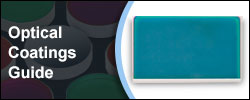

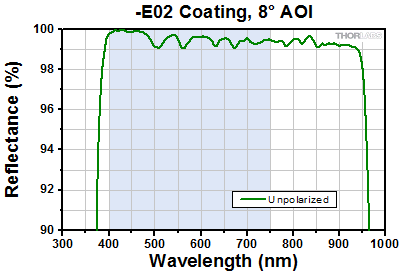
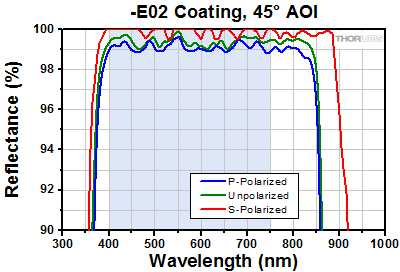


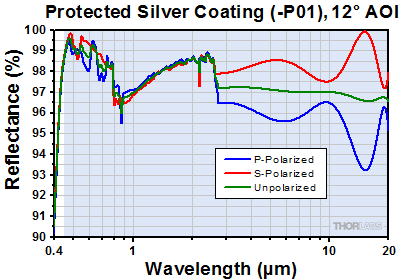
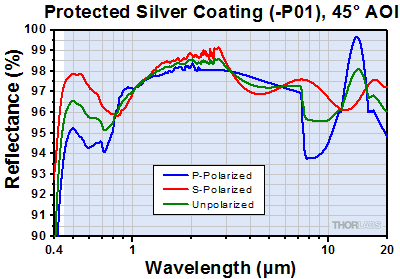

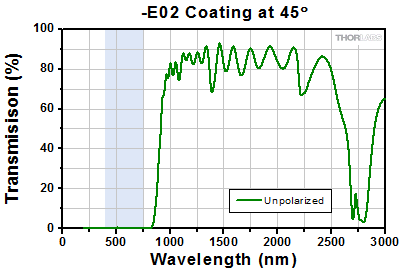
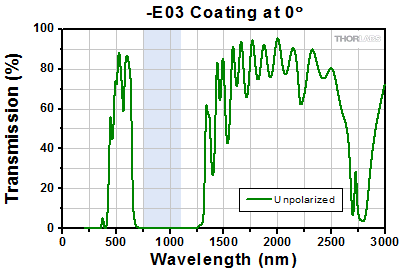
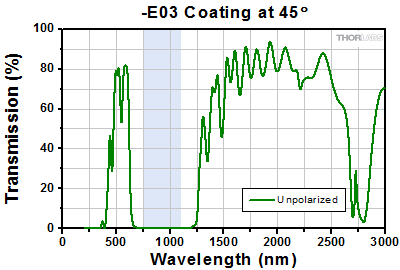
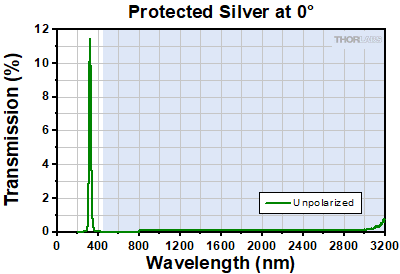
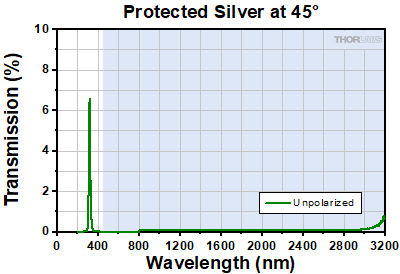

 Plano Mirrors, Back Side Polished
Plano Mirrors, Back Side Polished